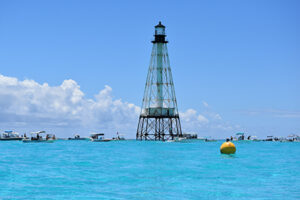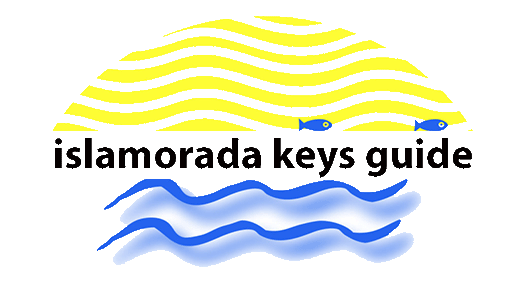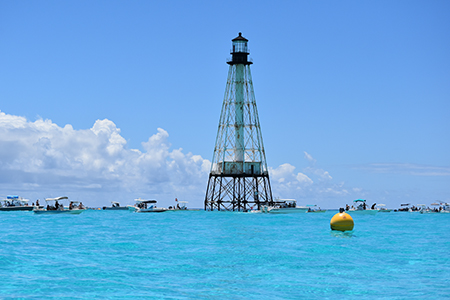
Map Where to Swim | Snorkel Around Islamorada
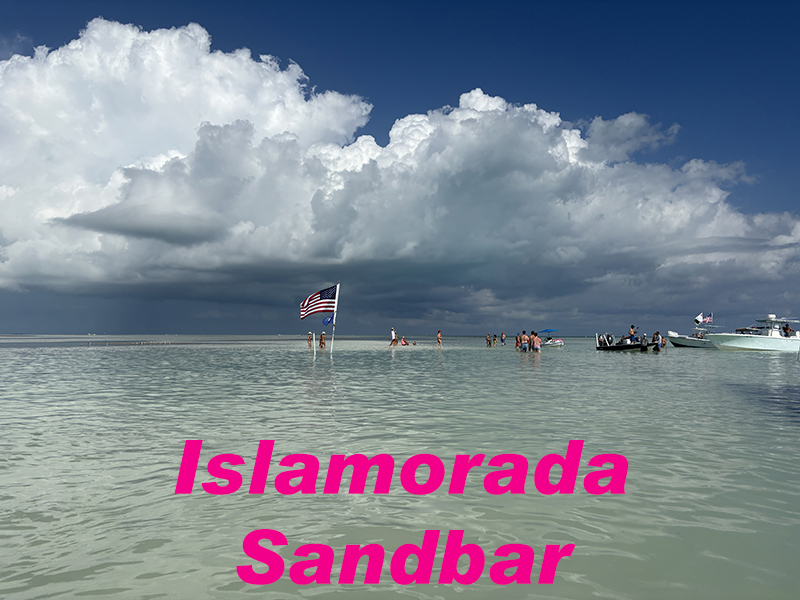
Looking for a map of where to swim & snorkel around Islamorada with your own boat? There are several popular spots around Islamorada. Bring your boat... or rent one! Take a 1/2 day party boat trip.

Alligator Reef, Sandbar, Hens & Chickens, Cheeca Rocks, Founder's Park are featured below!
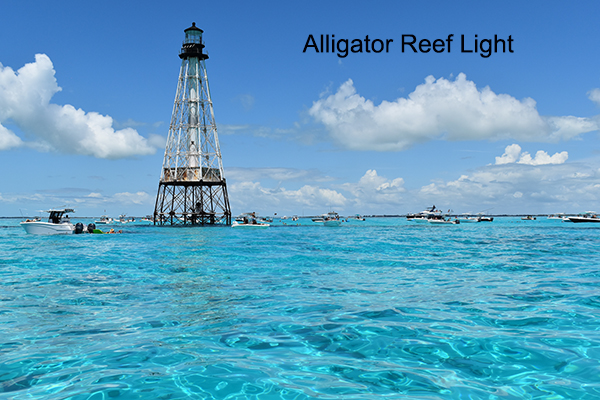
Traveling from WHALE HARBOR to ALLIGATOR REEF LIGHT is a wonderful ride. Alligator Reef is about 6 miles off shore on the edge of the reef. At the edge, water drops from 10 feet to oblivion. Once here you'll see "swimming pool" water color with white sand bottoms.
Can be a bit wavy when the winds are high. Most come out here to snorkel and swim when winds are under 10mph. Makes an enjoyable afternoon place to hang out. Floating around I have not seen too many fish. Float around in this giant swimming pool with the crystal clear water over pure white sand. One day we tossed some food out - and suddenly came a whole group of Yellow Tail Snapper, followed by a 3' Nurse Shark swimming under me. I was told these are not aggressive, however, if provoked they will attack. I got out of the water until our snacks disappeared, then the fish did too, and felt comfortable again to just swim!
BRING SOME FLOTATION products to fully enjoy the area since the water is 7' to 15' deep.
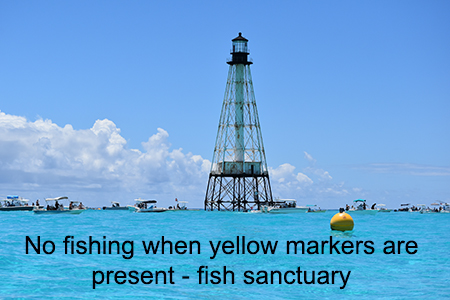
Along the way are the Cheeca Rocks snorkel area. Watch your charts since there are some shallow areas along the route. Please note - when you are inside "yellow balls" marking a snorkel area, there is NO fishing allowed by law. Please also watch your speed inside these areas for snorkeling.
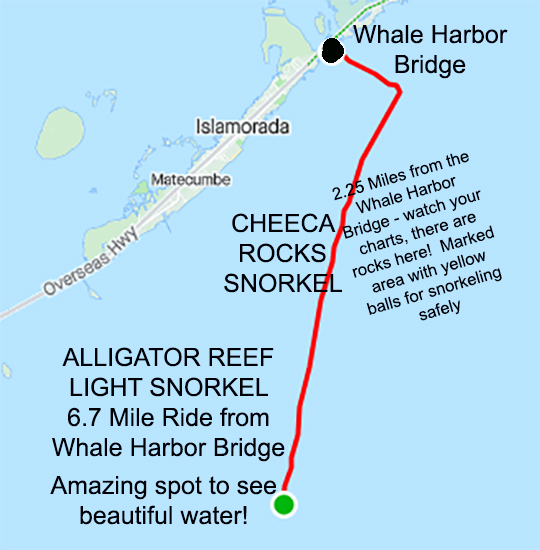
Not a good idea to swim where fishermen are "chumming" the water! Here is a Hammerhead shark circling our chum bag while fishing in Islamorada. It is very common to snorkel with many Barracuda present. They have never bothered me personally, however, I do not swim toward them. Occasionally we will bring leftover pancakes or crackers and toss in the water to snorkel to attract small fish.

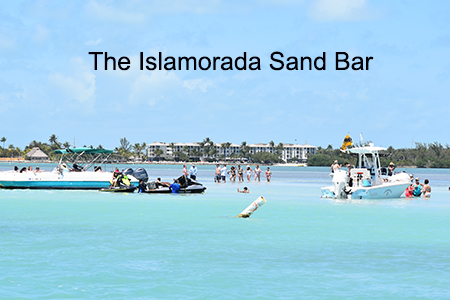
The famous Islamorada Sand Bar swim (standing spot) "ocean side" at the Whale Harbor Bridge is a must see each time you boat here. Stay and enjoy the daily tidal change from sand to 3-4' of beautiful clear ocean, or just take a drive-by for some excellent photo opportunities.
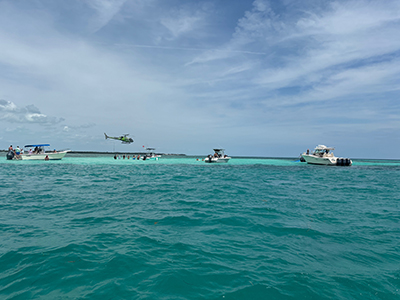
Low tide is best since you will see the actual "sand" beach. But even at high tide you can still stand in 3' of water at the shallow area which parallels the Whale Harbor area.
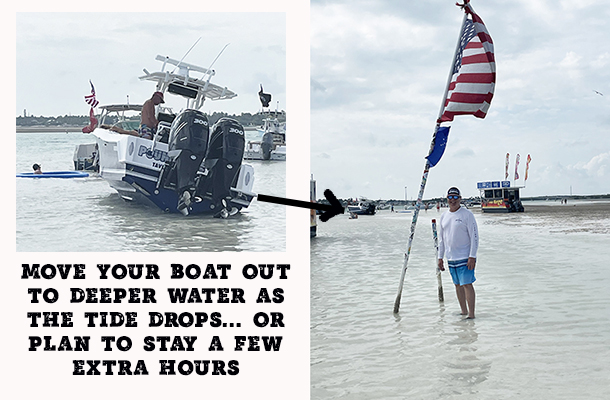
Take care however to watch the tides! We have seen many boats get stuck as the tide drops faster than you may expect. You'll have to wait a couple hours if you get stuck for the tide to come back. Most boaters will keep watch and continually will move their anchor closer to the channel to maintain the appropriate depth to exit when ready.
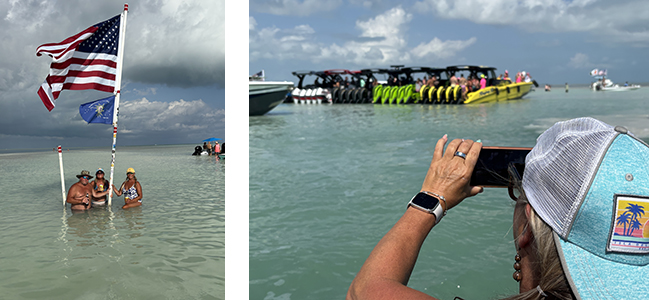
The "Sandbar" is just outside of Whale Harbor Channel ocean side.
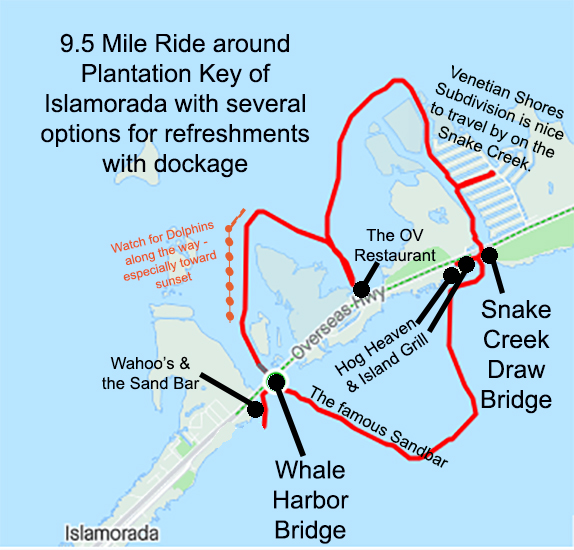
As you travel on the gulf side - make sure to keep an eye out for dolphins along your route feeding in groups!
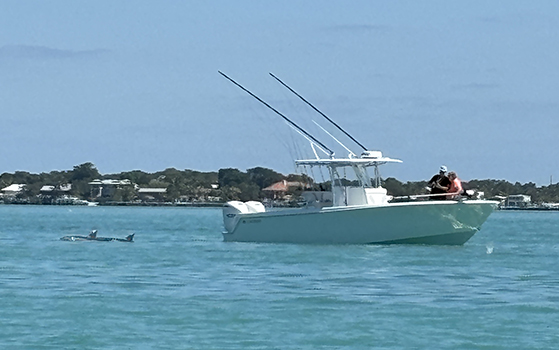
While standing at the Sandbar, we have seen a variety of fish, manatee, lobster, conch, stingrays, and starfish. Bring your snorkel! Even in the shallow water it's a nice and easy place to practice your snorkeling technique.
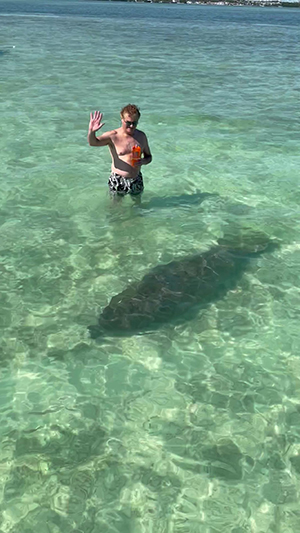
Hens & Chickens are north of Plantation Key between Snake Creek and the Tavernier Creek "ocean side" is one of the best snorkel areas around Islamorada. For beginners and experienced, this is my favorite place to snorkel. Easy, not too deep, plenty of fish to see. How far? About 2-3 miles offshore toward the reef off Islamorada.

There are a number of balls for you to tie your boat onto. Do not anchor here - use a ball to not damage the coral and sea fans. My boat cleats are not as huge as the ball's lines, so I tie the ball line to one of "my smaller" boat lines and tie that to my boat upon arrival.
Each ball is a different experience, so take your time and try a few different locations. What if all the balls have boats tied to them? I never hesitate to pull close enough safely (watching for people in the water) and ask if I can tie off my boat to their stern with a couple long lines. Everyone is very accommodating to share the wonderful experience.
Don't feel like getting in the water? We usually bring some snacks for the fish! Leftover pancakes and crackers always seem to attract tons of fish within seconds.... even if you're just "drifting" through the area.

You MUST have a snorkel flag flying if you plan on snorkeling in these Marine Sanctuaries .... and you will get a ticket if you don't fly one. So take care too when going through this area since snorkelers do venture a ways from their vessels to see a lot of area. No fishing is allowed inside the yellow balls either! I have seen both Florida Fish & Game and the US Coast Guard protecting this area from poachers and you will be fined.

Founder's Park in Islamorada "bay side" is a fee to enter via car for non-residents. If you are renting a home for a month, you may bring your lease paperwork to the park office and they will give you a "resident" card to enter the park for free. This park is found on the map above, just above Hens & Chickens pop out image on the bay side (just north of the Snake Creek).
This is a beautiful park - especially for families where you may walk in the water and snorkel. Full facilities are here, as well as an added fee to use the olympic size pool with diving boards. There is also a splash pad!
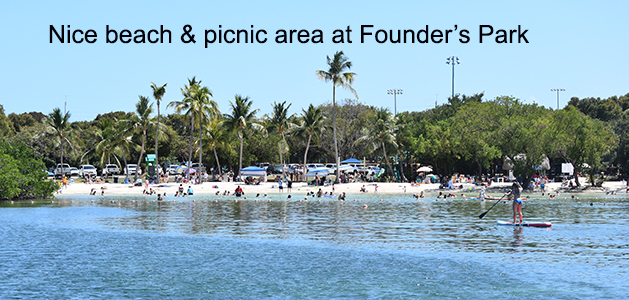
Coming by boat to Founder's Park? You may anchor outside the swim area and "swim." I recommend swimming / snorkeling only - or just floating around when you are "outside the beach designated swim markers". We have found may jelly fish here which reside on the bottom outside of the designated swim area. They look like brown patches of grass that sit on the bottom as they lay upside down with the tentacles facing up. If you walk on one you will get stung. I personally have never had a problem just floating around and snorkeling the surface - as always in the ocean you must swim at your own risk.
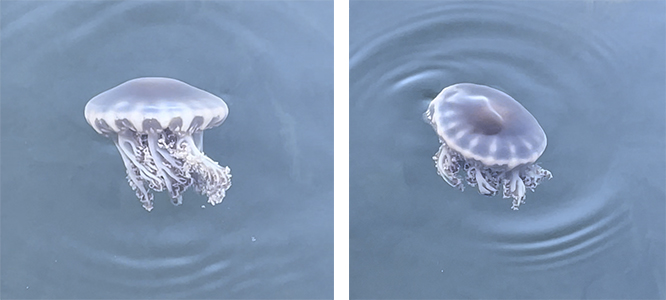
I spotted one of these brown "Portabello Mushroom" looking jelly fish above floating on a canal one day and did some reading from Key West Aquarium
- Cassiopea, or upside-down jellyfish, are a common sight in the shallow seagrass and mangrove habitats around the Florida Keys. Take a kayak trip to see large “fields” of these animals resting on the bottom in the shallows.
- Cassiopea jellyfish spend most of their adult lives upside down on the seafloor, giving them their common name.
- These animals have photosynthetic algae that live in their bodies, which make food for the jellyfish and give them their colors.
- Cassiopea jellyfish are a cause of “stinging water” or “ghost stings.” These animals release mucus grenades filled with stinging cells called cassiosomes when disturbed. The cassiosomes float in the water column and sting small prey items that sink down to the jellyfish.
- These are also used for defense when the Cassiopea is disturbed, creating the “stinging water” that can irritate your skin!
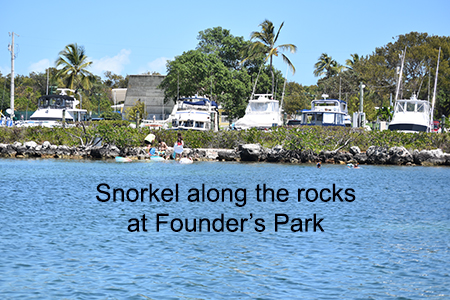
Along the rock wall on the marina side is a great place to snorkel at Founder's Park.
Short Road Trips - 1/2 Day
Bahia Honda Park MM36.8 is a most beautiful area, if not the best, in the Keys. On your way back you may enjoy the Turtle Hospital in Marathon.
Part of the joy of going to Bahia Honda is crossing the 7 Mile Bridge just south of Marathon!
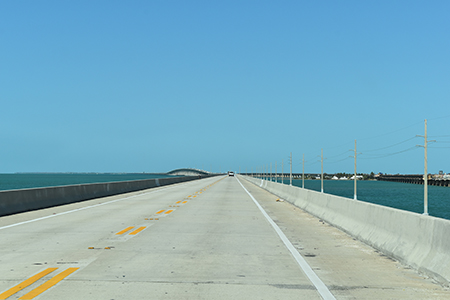
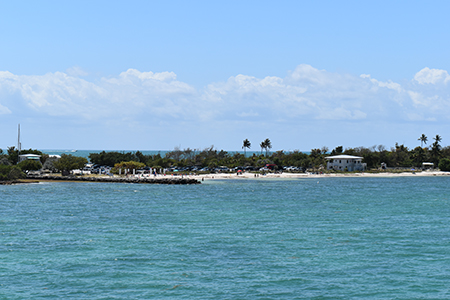
Bring your snorkel gear and water shoes. This is a beautiful place to walk in and swim / snorkel.

